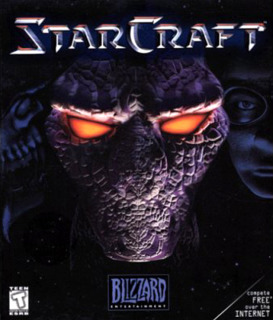Starcraft was a much-awaited Blizzard title, so when it was well-received (and sold well), Blizzard just had to make an expansion to further build on the IP that they have created (and earn some more revenue while doing so).
Brood War is an expansion that is intended to provide some development to the intriguing plot in the original game, introduce some new units to address some setbacks in the original designs of the factions and to fix some other flaws that are not gameplay-related (not that there were many critical ones in the original game).
Firstly, this reviewer would like to get the descriptions of the graphical and sound designs out of the way, as they are not significantly different from that in the first game.
The graphical designs have very much remained the same. A few units in the original game appear to have updates in animations (perhaps the Hydralisk had some), but these are still in line with their character and the theme of the faction that they belong to. Likewise, the new units have designs that are true to the themes of the factions that they belong to as well.
Most of the sounds in the original Starcraft return in the expansion, with some new ones which are obviously for the new units. The biggest additions to the sound designs are of course the inclusion of new voiced-over lines for the campaign, and all of these lines have quality that one would expect from a game like Starcraft. There are also a few new soundtracks added in; these are intended to enhance the themes in the additional campaigns, and they do so satisfactorily.
Speaking of the new campaigns, Blizzard retained the sequential design of the campaigns in the original game. The biggest threat in the original game's story may have been dealt with, but a safe existence in the dangerous Starcraft universe is not one that comes naturally; it wasn't long before another deadly threat raises its ugly head (or in the case of the one in Brood War, not-exactly-ugly).
Old alliances had to be severed, and new ones made expediently in order to deal with threats which are common to parties that had once been at odds with each other. To describe the plot further would be to include spoilers, so it should suffice to say that if a player likes the themes of double- and triple-crossing for a variety of reasons, Brood War's campaigns will not disappoint.
The core gameplay has not changed, as to be expected from what is no more than an expansion that was intended to address flaws with the original formula. (Although as an expansion pack, this design goal was one that was quite rare among so-called expansion packs for other games at the time, which tended to be no more than, well, more of the same thing, flaws and all.)
There are still changes that do affect gameplay significantly (though not to the extent of an outright overhaul). Many of these changes involve tweaks in the costs and combat prowess of units that had originally been perceived as either underpowered (thus becoming under-utilized) or overpowered (thus practically becoming a staple of many build strategies). Defensive structures have also been buffed to deal with early game rushes. (Amusingly enough, Supply Depots have higher hitpoints and armor now too.)
The other significant category of changes are the addition of a handful of new units. Every faction generally gets one new unit in order to plug a hole in their capabilities at waging war or at least sustaining the damage wrought by war. The Terran Medic has been introduced to provide a way to heal Terran infantry, and she can also be upgraded to handle de-buffs, which have been debilitating to Terrans previously (especially their Siege Tanks).
The Terran Valkyrie has been added to give anti-air area effect firepower against enemy swarms. In a similar role, the new Zerg Devourer is intended to give the Zergs a much needed anti-air hard-hitter that is also capable of de-buffing enemy air units of other factions. (None of the Zergs' frontline aerial units have any special abilities of any kind, as opposed to some of the other two factions.)
The Protoss were already quite well-rounded in their capabilities, so the new unit that they obtain - the Dark Archon - is one that opens up entirely new strategies.
The Dark Archon serves as a hard-counter to enemy units with special abilities, though its power ability is a bit difficult to pull off as it has limited range and the Dark Archon is actually more feeble than the regular Archon.
Its most peculiar - and most useful - ability however is that it can capture enemy units, including enemy workers that can be put to work building the bases that other factions can build. This requires a lot more attention and APM (actions-per-minute) from the the player, but having a separate unit limit and the potential to raise armies that complement each other are huge advantages for Protoss players who are willing to risk the extra investment of resources and time.
As for multiplayer, there were no new game modes, but Blizzard has included a few official maps whose quality rivals that of the original set.
These changes provide the perception of a significant improvement over vanilla Starcraft.
Therefore, while Brood War is technically more of Starcraft with holes in the latter's design filled in, what it offers is certainly tantalizing as all of it serves to enhance the gameplay experience of Starcraft. Brood War is a very worthwhile expansion indeed.

